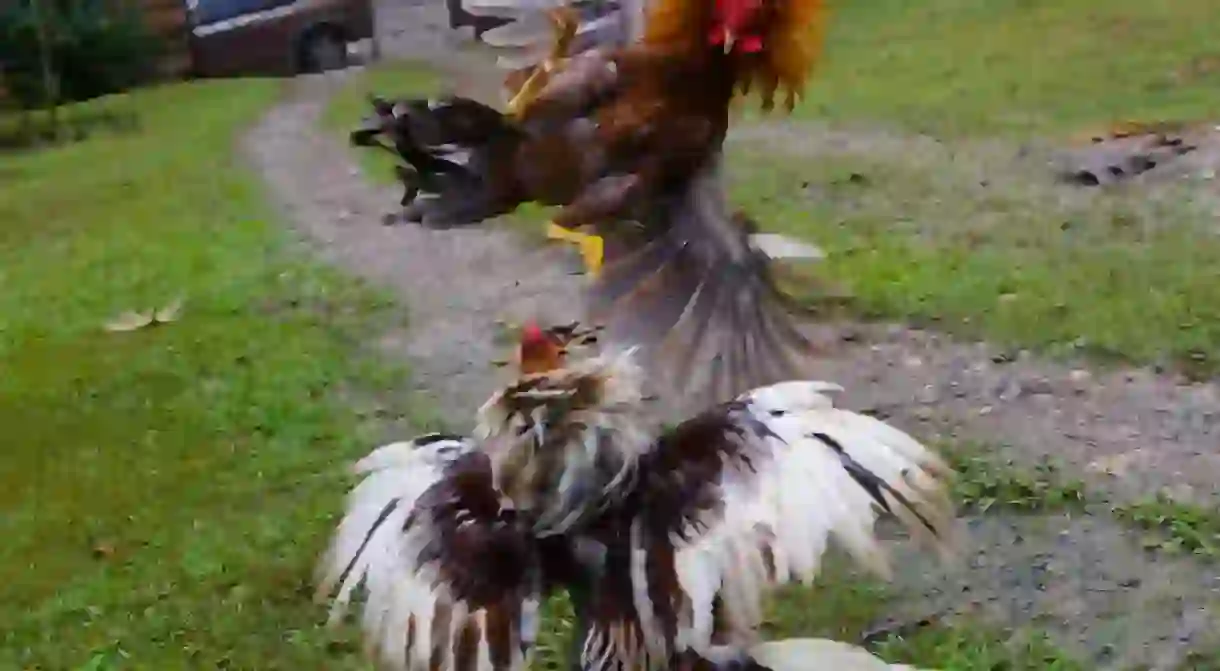A Brief History of Cockfighting in Puerto Rico

Cock fighting is a sport still practiced in Puerto Rico, though it has been banned in many other countries. It is thought to have been introduced during the island’s time under Spanish rule and remains popular to this day. For more information about this controversial tradition, read on.
Breeders of the fighting birds train the roosters, which can include supplying them with vitamins, providing them with the best food, and sparring, in order to attempt to develop the best fighters. The gamecocks, as they’re called, fight each other in a pit while wearing plastic spurs attached to the back of their claws in order to injure the other bird. During the fight, spectators call out bets and the clash ends when one bird can’t continue fighting, retreats, or dies; a tie occurs if both roosters can keep fighting after 15 minutes. Afterwards the surviving bird(s) are taken care of, a process that may well include giving the bird medication.

Cockfighting is legal in Puerto Rico, and very popular, though not universally. According to a document from the National Park Service, every year “over one million people attend the fights, generating over one hundred million dollars in bets, admission tickets, food consumption and other expenses incurred at the galleras”. Some well known galleras, where the cock fights take place, include La Muda in San Juan, the Club Gallístico de Puerto Rico in Carolina, La Gallera De Cerro Gordo in Bayamón, and the Gallera Los Cocos in Quebradillas.

While many people enjoy cockfighting and the Puerto Rican government declared it, “an integral part of the island’s folklore and patrimony” in 2010, there are people who oppose it, especially animal rights activists who don’t view the fighting as a sport and consider it animal abuse.
Though undoubtedly controversial, cockfighting is so much part of the island’s culture that many artesanos, craftsmen and women, create pieces inspired by or depicting elements of cockfighting.














